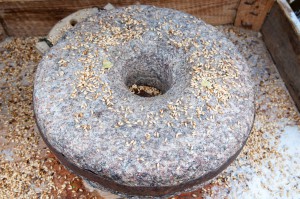When most Americans think of “grains” we think of wheat, rice, and oats. For many of us, these three grains have played a big part in our daily diet for most of our lives. But times are changing and our reliance on these three grains as the foundation of our diet needs to change too. It isn’t that we need to stop eating these grains but that we need to start learning to diversify. From increasing rates of gluten intolerance to a rapidly expanding world population, it is becoming clear that the food of the future will need more than just these three grains to keep us all fed and healthy.
For many of us, the challenge is to figure out how to incorporate these ancient grains into our daily diet. Our lack of familiarity with the grains themselves paired with no experiential information on how to use them in recipes is making widespread adoption difficult. Get ahead of the curve with these tips for how to fill your family’s plates with these delicious, healthy ancient grains.
Amaranth
Amaranth, which comes from Mexico, provides protein, fiber, calcium, iron, manganese, and folate. It has a nutty flavor and can be cooked into porridge like oatmeal or ground into flour for use in bread, pasta, and other baked goods. Here are some great ways to use amaranth.
- Corn Amaranth Griddlecakes with Spicy Black Beans
- Amaranth Polenta with Wild Mushrooms
- Blueberry Amaranth Porridge
- Creamy Cannellini Bean Amaranth Soup with Basil
- Amaranth and Orange Bread (using a bread machine)
Buckwheat
Like several of the ancient “grains”, buckwheat is actually a seed that is packed with antioxidants, fiber, magnesium, manganese, zinc, and iron. It is also very versatile and can be toasted, roasted, or ground into flour for use as a replacement for wheat flour. Here are some ideas for using buckwheat at breakfast and beyond.
- Lentil and Buckwheat Salad
- Blueberry Buckwheat Pancakes
- Buckwheat Noodle Salad
- Buckwheat Potato Bread with Chile Honey
- Buckwheat Tabouli
Millet
Millet, which is thought to be the least allergenic of the cereal grains, offers a wide range of nutrients including protein, fiber, vitamin E, vitamin B, iron, magnesium, phosphorus, and potassium. It can be ground into flour, used as a cereal, and made into bread. Here are some ways you can use millet in your menu.
- Millet Muffins
- Stuffed Tomatoes
- Hot Millet Cereal
- Caribbean Chicken, Millet, and Mango Salsa
- Millet Linguine with Walnut and Basil Pesto
Quinoa
Quinoa is another seed commonly considered to be an ancient “grain”. It is packed with fiber, magnesium, and iron and can be used for baked goods, ground into flour, or eaten it its natural state like rice or corn. Here are some of the ways quinoa can fill your plate.
- Quinoa and Black Bean Salad
- Southwest Quinoa Vegetable Casserole
- Turkey and Quinoa Meatloaf
- Kale, Quinoa, and Avocado Salad
- Coconut Curried Lentil Stew with Quinoa
Related articles
- Get to Know these Neglected Grains (fillyourplate.org)
- Hey Kids! What’s Cooking? (fillyourplate.org)
- Pasta Primer (fillyourplate.org)


